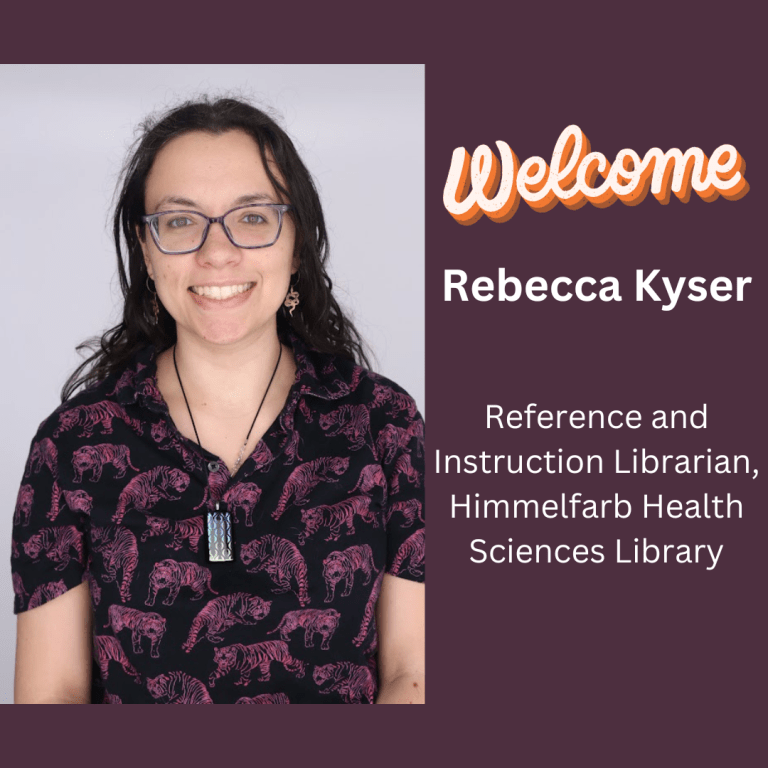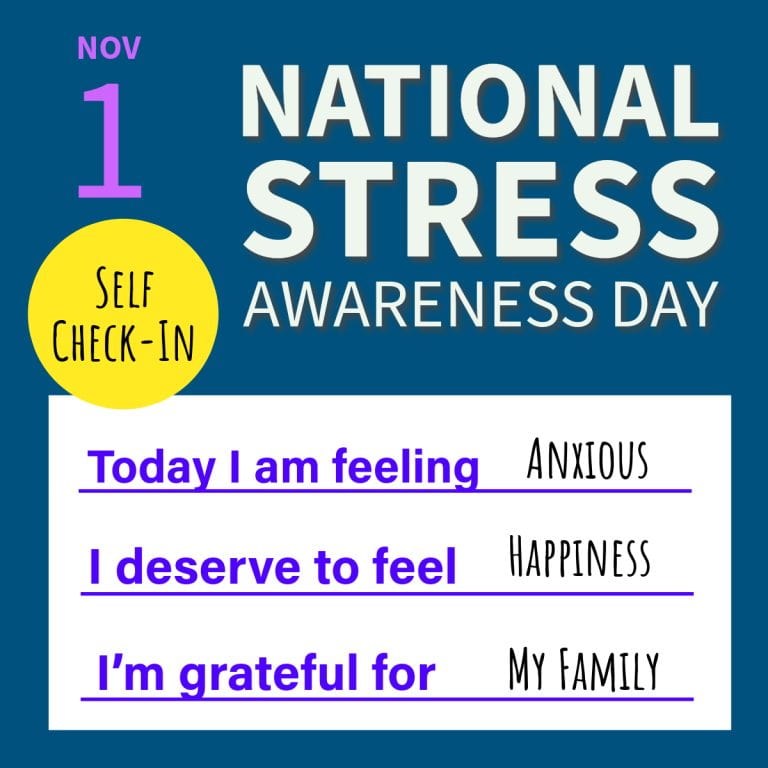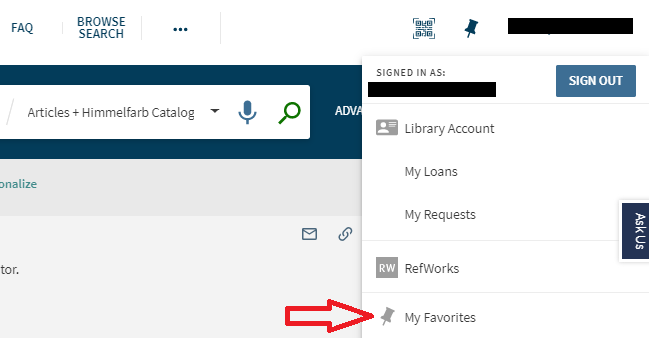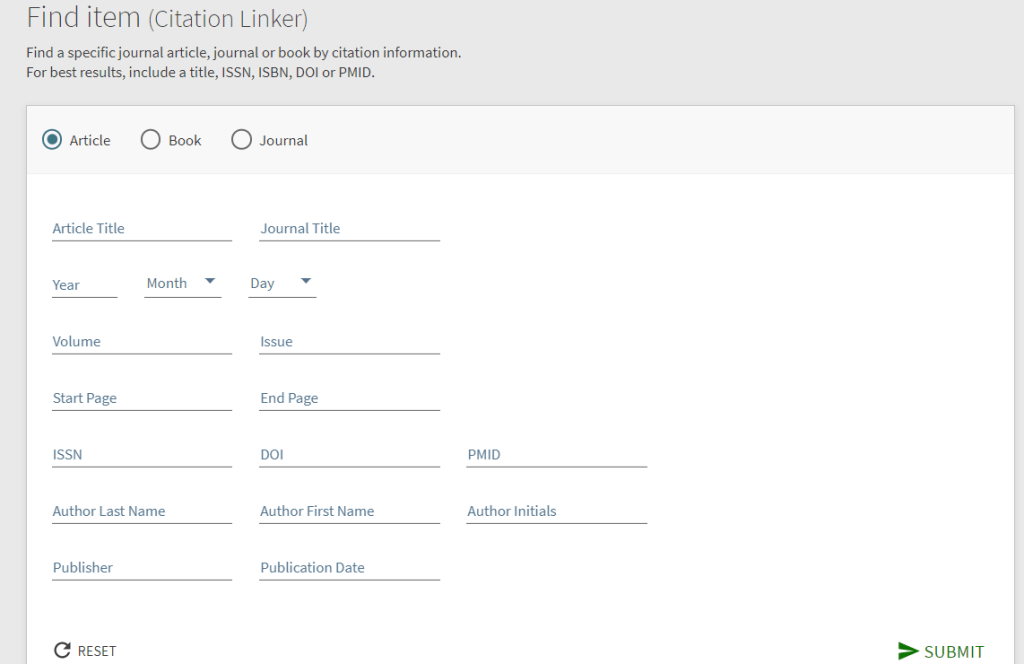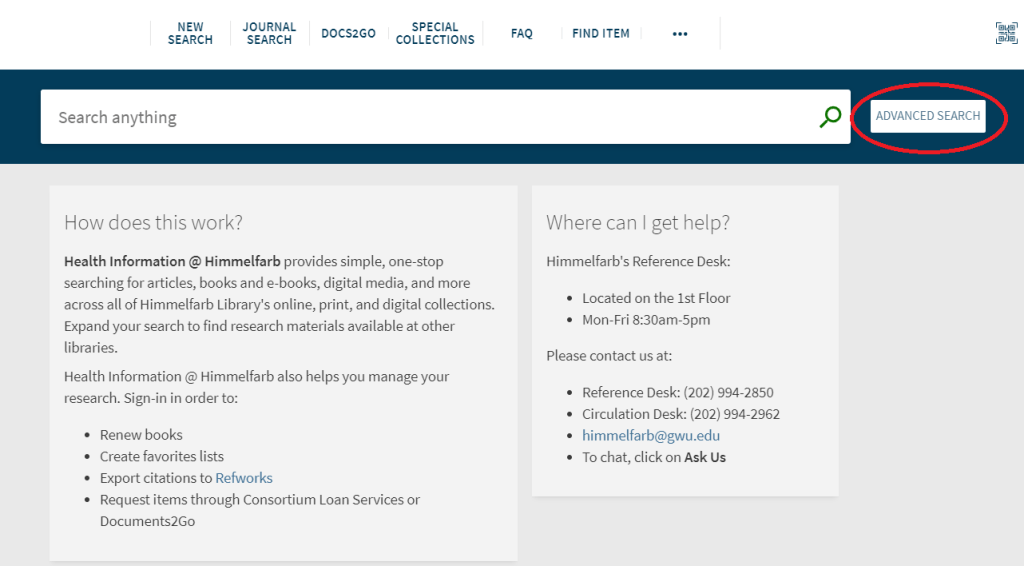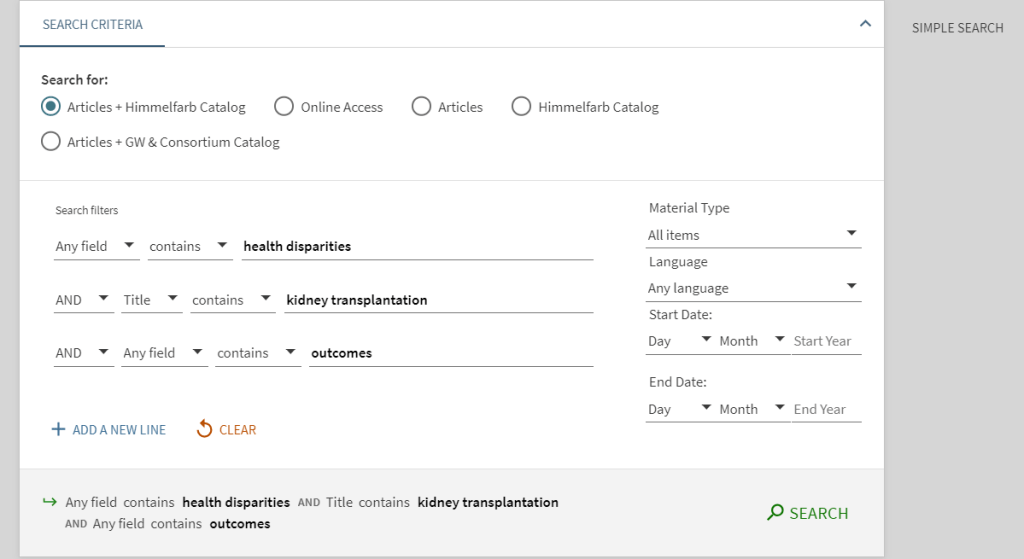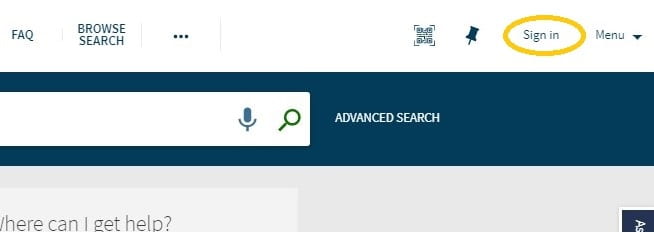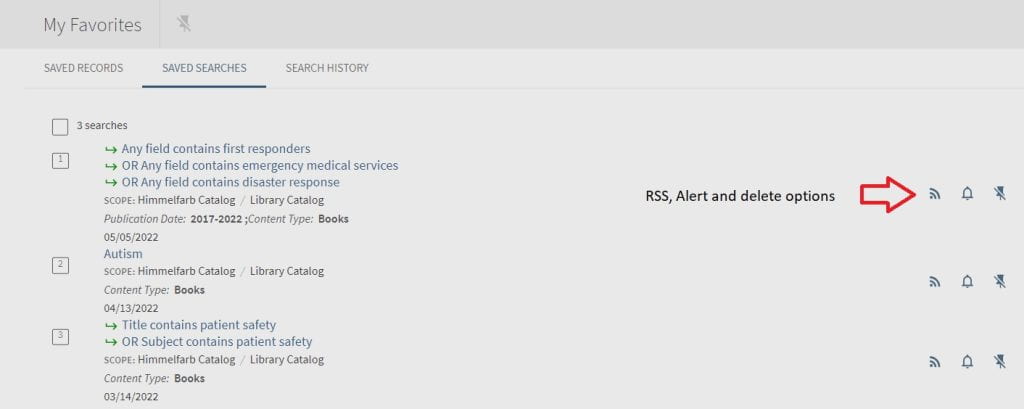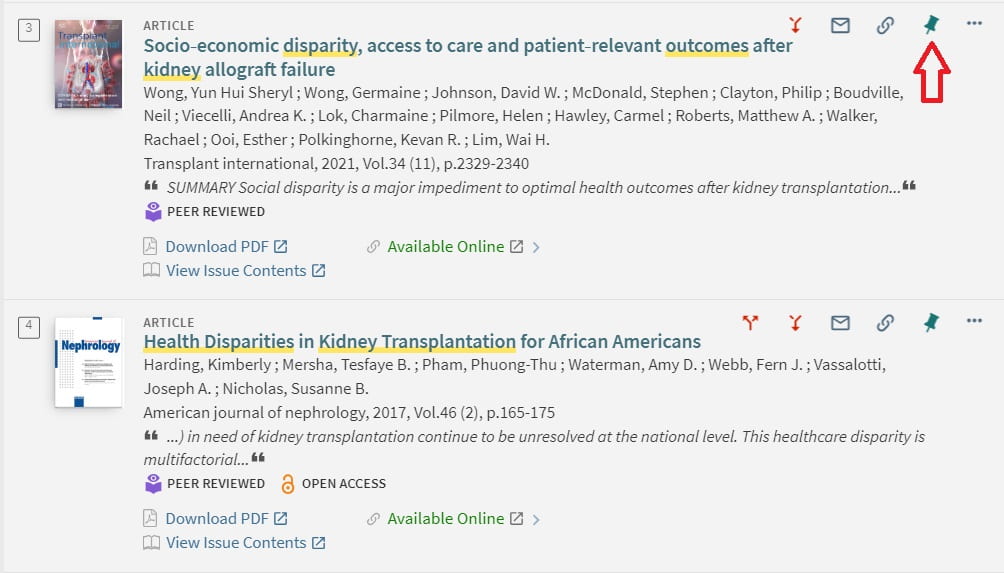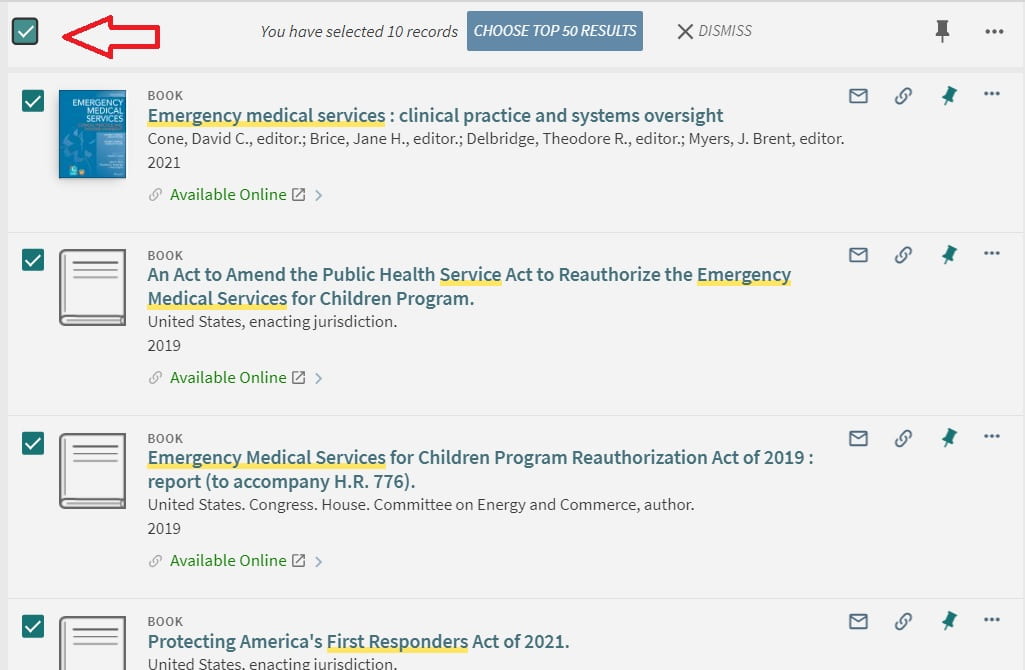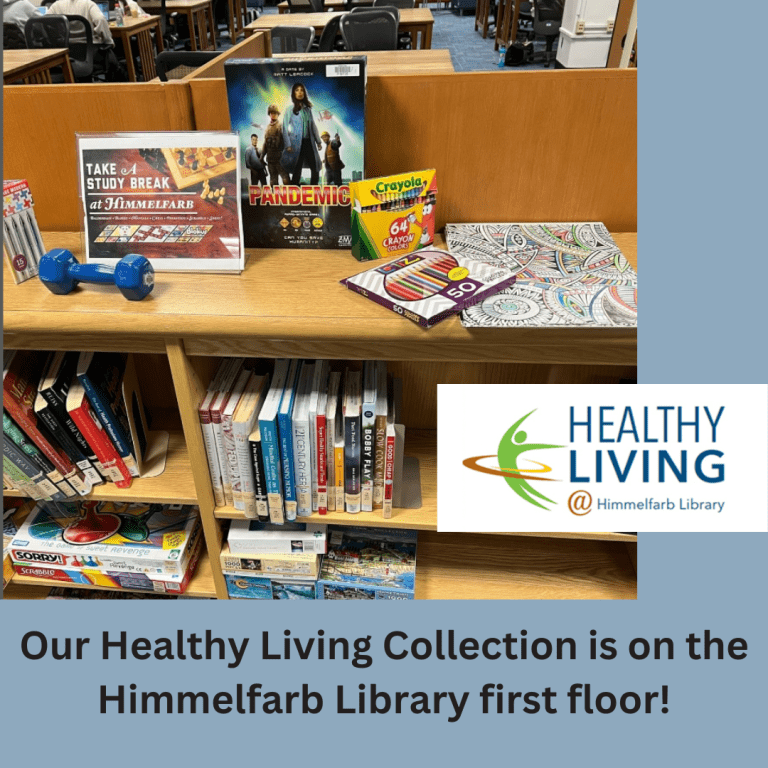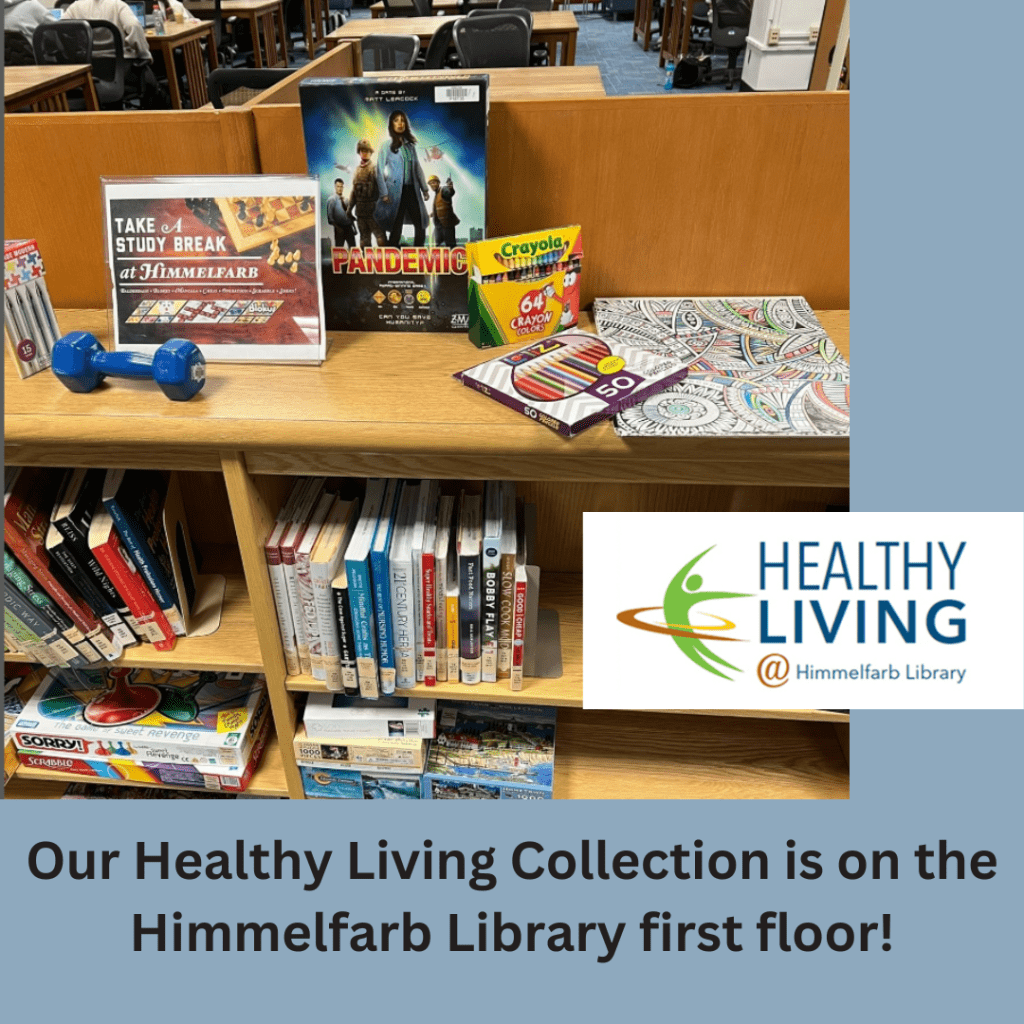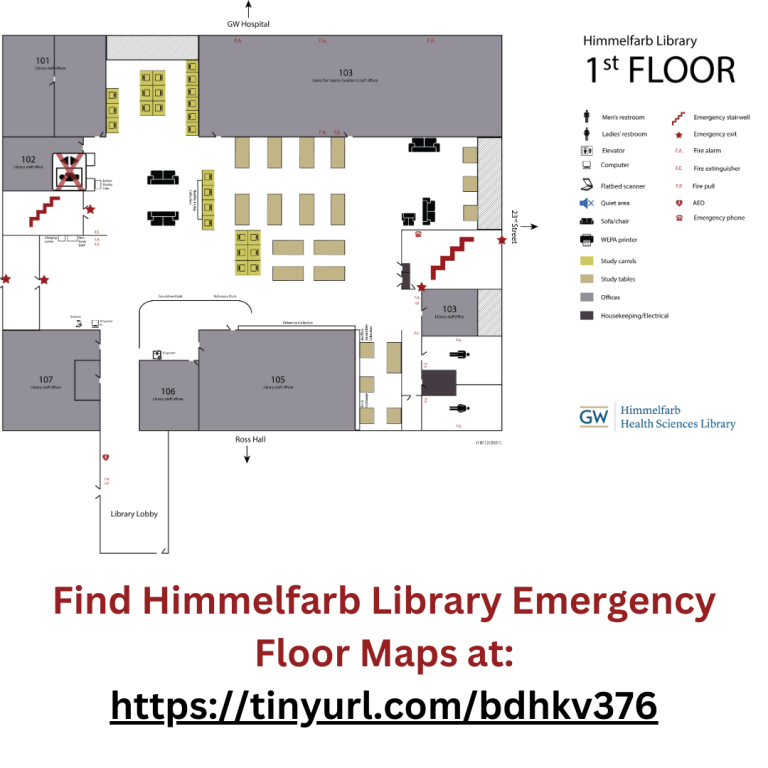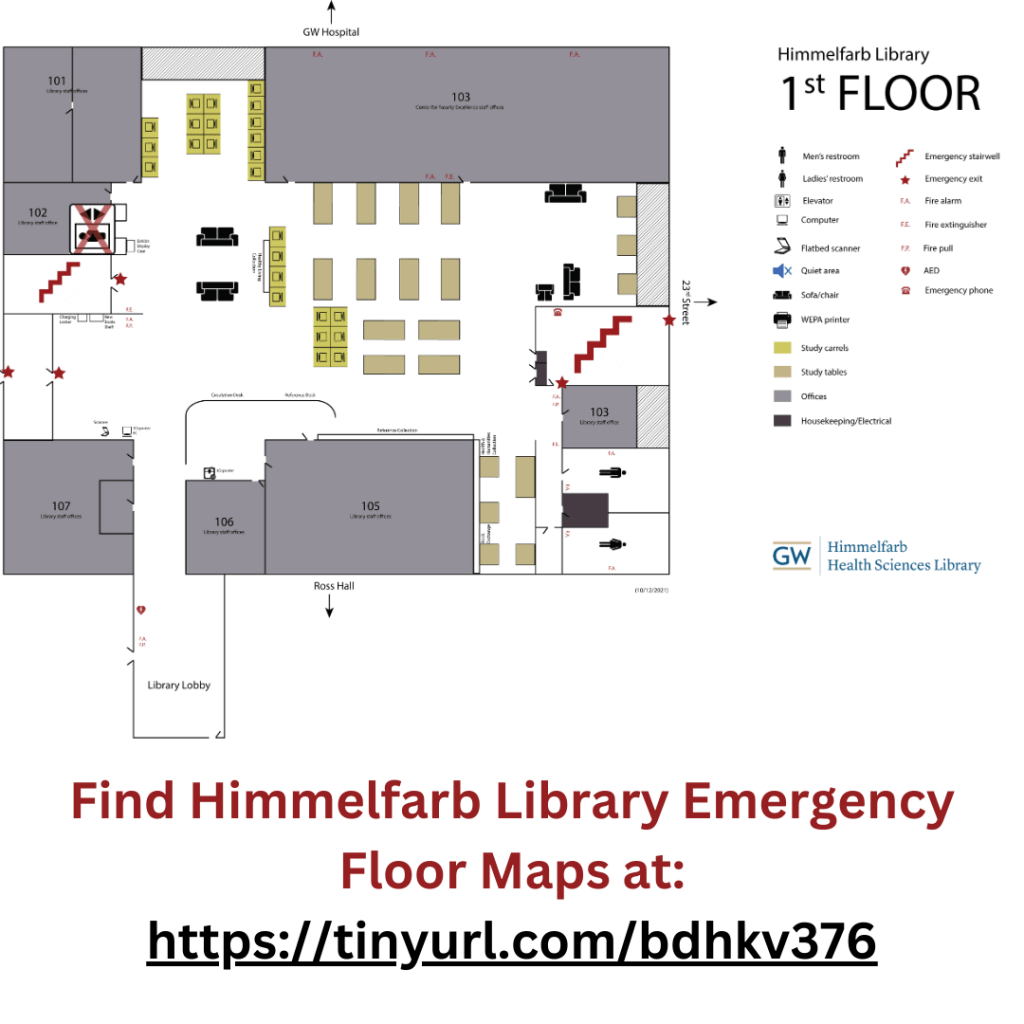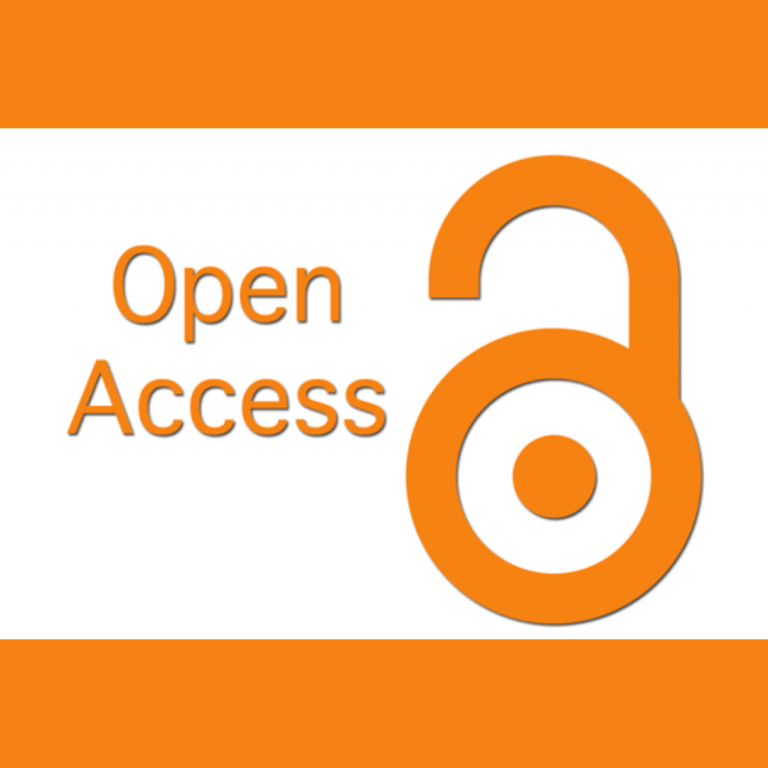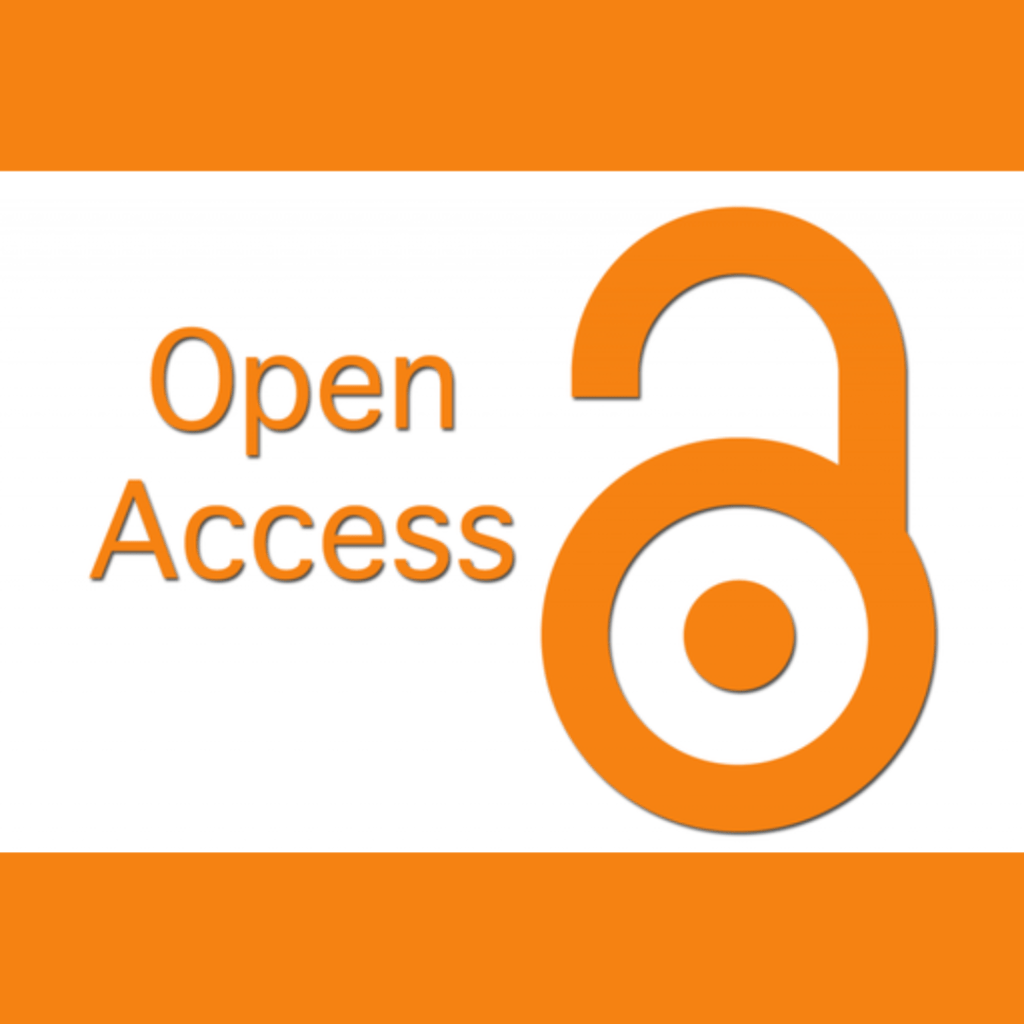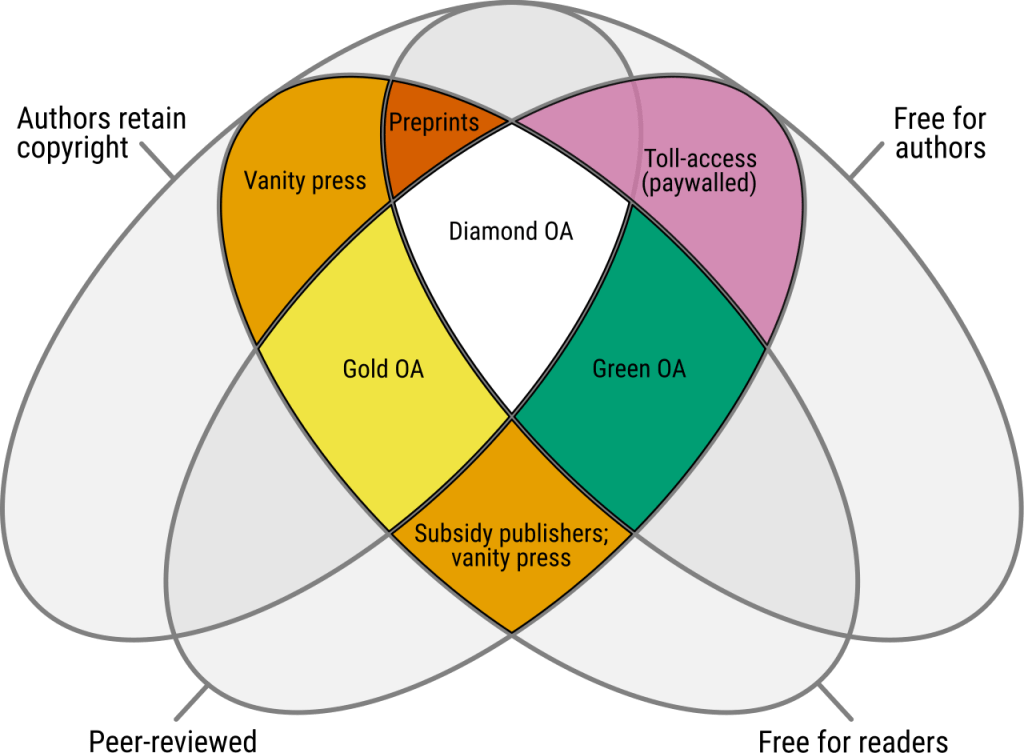We are very happy to welcome Rebecca Kyser to the Himmelfarb Library staff! Rebecca started work here as a Reference and Instruction Librarian in early October. She joins us from Otterbein University in Ohio where she was an Information Literacy Librarian. Rebecca has a Master of Science in Library and Information Science from the University of Illinois where she won the Health Science Information Management Award and a Bachelor’s degree in English and Digital Studies from the University of Wisconsin. Here’s some things to know about Rebecca!
Tell us about your studies and work before Himmelfarb and how you got here.
Before Himmelfarb, I was a Visiting Information Literacy Librarian at a liberal arts college in central Ohio. It was a blast working there: I got to teach my own course during spring semester, and I had a lot of fun working with students. While I was in grad school, I worked as a research assistant studying Covid-19 misinformation, along with other types of health misinformation. I continue to do that research to this day; I find it somewhat amusing that I only have a TikTok account for research purposes.
What are you doing in your new position at Himmelfarb?
My position here is to serve in Reference and Instruction. Along with my colleagues, I’ll be working at the reference desk, monitoring the online reference chat, and doing some instruction in the Practice of Medicine courses. I hope to bring my specialized knowledge into the library more: medical misinformation has always existed but social media has really amplified it. My hope is that I can provide resources to better help students prepare for encountering it in practice.
What have you most enjoyed about working here so far?
I’m really excited to work in an actual medical library. It’s super interesting to see what students are working on, and how we approach medical education in the digital age. My Mom worked as a nurse in the old GW Hospital, so it’s really fun to compare her stories to how things are today.
What if anything has surprised you?
I don’t think I’m surprised by much, as I have worked in both medicine and librarianship before, but I will say I am adjusting from going from the Midwest to the East Coast. The fact that train service is so abundant here has been delightful: I don’t miss the amount of driving I had to do, that’s for sure.
What do you like to do in your time away from work?
I’m a pretty avid knitter, so my hands are often busy with my latest project. I’m also a huge fan of board games and trivia, so if anyone needs help on learning the board game Pandemic (we have it on the first floor), I would be happy to help.

